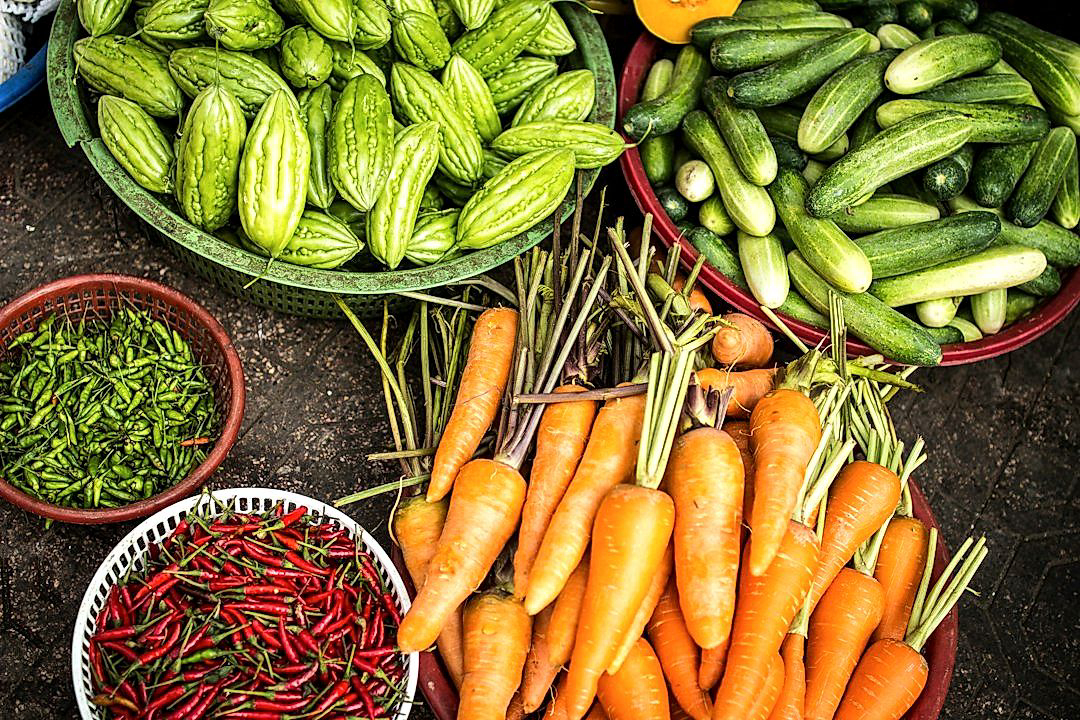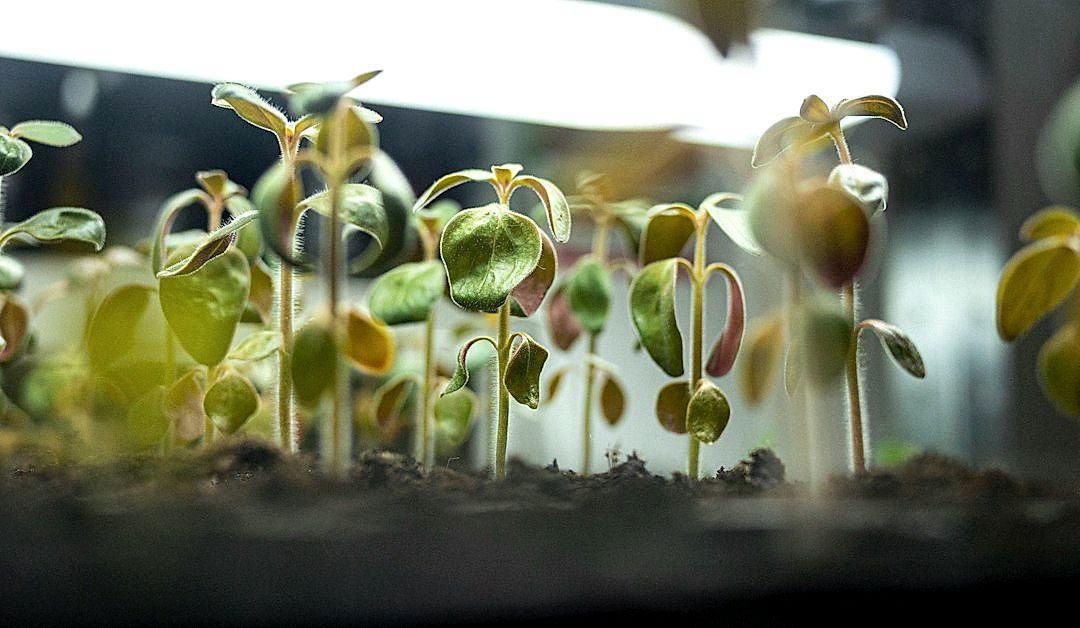Community Supported Agriculture has increasingly become a focal point of conversation within the agricultural industry, leading to a paradigm shift in the way fresh produce is distributed.
By directly linking consumers and growers, this unconventional model offers distinctive advantages over traditional methods.
This includes but is not limited to higher quality food, environmental sustainability, and stronger community connections.
However, with so much conversation around this topic, there remains a level of confusion and misunderstanding.
Our objective here is to dispel any misconception and expose the true benefits of this innovative agricultural practice.
This discussion is integral to our understanding and future outlook towards sustainable fresh produce distribution.
Advantages Of Csa For Fresh Produce Distribution
1. Ensures fresh, locally grown and seasonal produce
The advantage of CSA for fresh produce distribution is the assurance of local and seasonal produce.
CSA (Community Supported Agriculture) provides just-picked produce that exudes freshness, using this method of distribution ensures the optimum quality of your fruits and vegetables.
This freshness adds a significant level of appeal, making the fresh produce look vibrant and in-season, thereby attracting more consumers.
Seasonality comes into play when consumers choose CSA for their produce needs.
It is well known fact that fruits and vegetables taste best when they are in-season.
Producing in-season promise of superior taste compared to produce flown in from across the world that might be out of season.
Through CSA, consumers have the assurance of eating fruits and vegetables at their prime, offering the best texture, colour and flavour.
Food safety is another key issue that is addressed with locally grown produce.
As the distance between the farm and the consumer is vastly reduced, CSA allows a greater transparency with regard to where and how the produce is grown.
This creates a trust factor in consumers, knowing that their food is grown to the highest standards, often in better conditions compared to mega-farms.
The distribution of fresh, locally grown produce also helps in reducing food waste.
Given the fact that fresh produce is highly perishable, shipping it long distances often leads to spoilage.
By distributing produce locally, CSA helps in reducing this waste, making it an environmentally friendly choice.
Thus, choosing CSA not only guarantees fresh, local and seasonal produce, but also contributes to a more sustainable and efficient food system.
CSA is also beneficial for the local economy, as it supports and promotes the work of local farmers rather than outsourcing it to large scale agriculture firms.
Overall, the cornerstone advantage of CSA for fresh produce distribution, without a doubt, lies in its commitment to ensuring the freshest, locally grown seasonal produce you can get.
2. Supports Local Farmers and Economy
One of the significant advantages of CSA (Community Supported Agriculture) for fresh produce distribution lies in the support it offers to local farmers and the economy.
The direct relationship between consumers and growers fostered by CSA encourages fair trade and allows farmers to receive full retail value for their produce.
This, in turn, increases their income and contributes towards a more sustainable farming operation.
Moreover, money spent on locally grown and produced food stays within the community, stimulating the local economy.
By investing in CSA shares, consumers are essentially supporting local agriculture and contributing to the economic resilience of their area.
A solid local economy decreases dependency on imported goods and bolsters the community’s self-sufficiency.
This method of fresh produce distribution also helps in creating job opportunities on the local farms, benefiting the local economy further.
Local farmers can also reinvest their profits into their farms, leading to an even better crop, thus creating an upward cycle of growth for the local economy.
With CSA, farmers are also not under pressure from middlemen or retailers to lower their prices, safeguarding their financial stability.
This model also provides consumers with the opportunity to directly influence local farming practices towards more sustainable and organic methods, by showing their willingness to pay for such produce.
By establishing long-term relationships with local farmers, CSA ensures the survival and profitability of small-scale farming.
This not only protects the rural landscape but also helps in preserving traditional farming practices and bio-diversity.
Every dollar spent on CSA shares affirms the value of local food, promoting a genuine local food economy that can resist the pressures of the global food industry.
When CSA farms thrive, they enhance local economies, enrich the soil, and promote a more intimate relationship between people and the food they eat.
Beyond just money, CSA creates a bond between the farmers and the consumers, forging a sense of community and mutual support that is invaluable to both.
3. Promotes Sustainable Agriculture Practices
The promotion of sustainable agriculture practices is a significant advantage of Community Shared Agriculture (CSA) for fresh produce distribution.
CSA promotes a farming approach that respects the natural environment by avoiding harmful pesticides and fertilizers.
Instead, it advocates for practices that build healthy soil, reduce soil erosion, and preserve biodiversity.
The focus is on creating a resilient, productive farm system that can withstand environmental stresses and remain productive.
Also, CSA promotes crop rotation and other techniques that preserve the long-term fertility of the soil.
Additionally, CSA farmers typically encourage wildlife on their farms, which contributes to biodiversity and helps to create a balanced ecosystem.
“By emphasising on sustainable farming, CSA helps in nurturing a system that ensures long-term productivity while maintaining environmental health.”
This farming method also helps to conserve water as it endorses better water management practices and makes good use of natural rainfall.
Moreover, sustainable farming practices in CSA often rely on renewable energy sources where possible, contributing to less fossil fuel dependency.
Importantly, CSA provides a platform where farmers can practice and share sustainable farming techniques with their members, effectively educating people on the importance of sustainable agriculture.
This aspect creates an open dialogue between growers and consumers, fostering a better understanding of what sustainable farming entails.
By supporting CSA, consumers are not just getting fresh produce, but are also supporting a system committed to the well-being of the earth.
The push for sustainable agriculture is not just about the present, it is vital for the future as it can provide a sustainable food system that can feed the growing population without damaging the environment.
Moreover, CSA’s promotion of sustainable agriculture practices transforms the conventional view of farming and introduces a more beneficial and environmentally friendly system.
Lastly, sustainable farming is not just good for the environment and biodiversity, it is beneficial for the quality of our food as well. The better the soil, the healthier the crop, and consequently, the healthier the food we eat.
4. Reduces carbon footprint and waste
One major advantage of Community Supported Agriculture (CSA) model for fresh produce distribution is its significant contribution towards reducing carbon footprint and waste.
This is primarily because CSA encourages the consumption of local and seasonal produce, which remarkably cuts down on transportation emissions.
Long-distance transportation of imported fruits and vegetables often contributes significantly to greenhouse gas emissions, thus escalating the global carbon footprint.
In contrast, locally grown produce requires minimal transportation, leading to a noticeable reduction in fuel consumption and air pollution – a key factor in curbing climate change.
On the other hand, the conventional industrial agriculture model often contributes to massive waste generation, both in terms of unused produce and packaging.
Large-scale farms often end up discarding a high percentage of their harvest due to cosmetic imperfections, thus resulting in a colossal squander of precious resources.
However, in a CSA system, the consumers share the risk of production and imperfect produce is not discarded, thereby minimizing food waste.
Moreover, compared to the conventional food distribution system, CSA involves minimal packaging with less reliance on plastics, which significantly reduces waste generation.
Many CSA farms also encourage their members to return the boxes used for distribution, adding another layer to the cycle of sustainable waste reduction.
Furthermore, the sustainable farming practices that are often a part of CSA models result in little to no use of harmful chemicals, thus lowering the pollution caused by agricultural waste.
Consequently, this model not only saves resources but also supports the longevity of ecosystems.
Adopting CSAs also emboldens consumers to make responsible choices that are beneficial for them as well as for the planet, promoting an ‘eat local, think global’ ideology.
Conclusively, CSA farms exemplify an environmentally friendly approach to agriculture and food distribution by focusing on reducing carbon footprints and minimizing waste generation.
They create an opportunity to build a sustainable food system that can shape our future food and farming landscape in a positive way.
So, by choosing CSA, we not only support local farms and enjoy fresh, healthy produce but also do our part in fighting climate change and preserving our environment.
5. Greater Variety of Produce
One of the central advantages of Community Supported Agriculture (CSA) for fresh produce distribution is the access it provides to a greater variety of produce than what is typically found in traditional grocery stores.
CSAs allow local farmers the freedom to grow a broader range of fruits and vegetables that may not be commercially viable for larger retail outlets.
Instead of being limited to the produce that can survive long-distance transportation and lengthy shelf lives, CSA shares often include unique and heirloom varieties that may not be available elsewhere.
CSAs foster a culture of culinary exploration by providing a diverse assortment of fresh fruits, vegetables, herbs, and sometimes even dairy and meat products.
The result of this greater variety is that consumers are encouraged to try new foods and expand their culinary repertoire.
By engaging with the seasonality of different fruits and vegetables, CSA members can also deepen their understanding of food cycles and the importance of seasonal eating.
This can have a transformative impact on meal planning and cooking habits, prompting more creative and nutrient-dense meals.
Furthermore, this diverse assortment of produce ensures that CSA members receive a wide spectrum of essential vitamins, minerals, and other nutrients from their diet.
This stands in contrast to a diet reliant on a limited variety of grocery store produce, which may result in a narrower intake of nutrients.
Additionally, the rotating selection of produce provided by CSAs can instigate a sort of “culinary adventure”, inspiring individuals to learn new recipes and preparation methods.
This can especially benefit those looking to diversify their diet or to incorporate more fresh fruits and vegetables into their meals.
It’s also worth noting that this broader variety of produce doesn’t only benefit the consumer; it also promotes sustainable farming practices.
When farmers are able to cultivate a wider range of crops, it reduces the likelihood of soil depletion and promotes biodiversity in the local ecosystem.
So, in participating in a CSA, one is not only benefitting from a varied diet but also supporting sustainable agricultural practices that protect our environment for future generations.
Overall, the access to a wider variety of fresh, locally grown produce is a significant advantage of CSA participation, and one that significantly enhances our connection to the food we eat and the local environment from which it originates.
6. Encourages Healthier Eating Habits
Participating in a Community Supported Agriculture (CSA) for Fresh Produce Distribution contributes significantly to encouraging healthier eating habits.
These programs supply a regular stream of fresh, locally grown vegetables, fruits, and other produce that might not be as easily accessible through traditional grocery stores.
This provides a convenient way for consumers to incorporate more fresh produce into their diets.
Studies have shown that CSA participants tend to consume vegetables and fruits more consistently compared to non-participants. This cultivates and encourages healthier eating habits.
Moreover, since the produce is locally sourced and often grown organically, consuming CSA produce is not only more environmentally sustainable but also supports overall health and wellbeing.
Furthermore, CSA provides a diversity of produce which encourages the discovery and consumption of new and unfamiliar types of fruits and vegetables.
This variety provides opportunities to experiment with different recipes and cooking methods, leading to a more diversified and balanced diet.
Additionally, food purchased from CSA programs tends to have a higher nutritional value than commercially grown produce, since they are harvested at peak ripeness when nutrients are at their highest.
The lack of time between harvest and consumption also means less nutrient degradation, resulting in healthier, fresher ingredients.
Subscribers of CSA also often report that they waste less food, as the process encourages them to be more mindful of their food consumption and the importance of using every part of the produce.
Participating in a CSA can also help in cultivating a healthier lifestyle beyond just eating habits, such as encouraging more regular cooking at home and reducing the reliance on processed and fast foods.
When the community knows the origin of their food and engages directly with their food producer, they become more invested in maintaining a healthy diet.
Being part of a CSA also provides a sense of communal and personal accountability for one’s health and diet, motivating individuals to make better food choices.
A CSA program doesn’t just help to increase the intake of fresh produce, its benefits extend to fostering an awareness of mindful, local, and sustainable eating.
Therefore, it can be seen that supporting a CSA program greatly helps in securing healthier eating habits, significantly benefitting both individual health and the broader community’s food system.
7. Creates connect between consumers and growers.
One of the distinctive features of Community Supported Agriculture (CSA) is its ability to create a strong, direct connection between consumers and the farmers who grow their food.
This is an important shift from the traditional model where food often travels thousands of miles before reaching consumers, making it challenging to know where and how it was grown.
CSA, on the other hand, bridges this gap by fostering a direct relationship between consumers and growers.
Members of a CSA become shareholders, or part owners, of a farm and in return, they receive fresh, locally grown produce throughout the farming season.
This connection is not just financial; it’s also emotional and social.
The relationship built through CSA provides consumers with the assurance that they are supporting their local economy and promoting sustainable agriculture, while growers gain financial security and the satisfaction of providing healthy, fresh food to their community.
CSA cultivates a sense of community and trust which is arguably absent from most conventional food distribution systems.
Farmers often offer their shareholders opportunities to visit the farm, participate in the harvest, and learn about the farming processes used.
This transparency fosters trust and educates customers about the value and challenges of sustainable agriculture.
Moreover, by interacting directly with farmers, consumers can share their preferences and feedback, influencing the varieties of produce grown.
Not only does this dialogue benefit farmers by informing their farming practices, but it also empowers consumers, making them active participants in the food system rather than passive recipients.
Through this connection, consumers are encouraged to eat locally and seasonally, enhancing their understanding and appreciation of local food systems and the seasonal nature of farming.
In addition, CSA models help to stabilize farmers’ income, reducing their financial risk.
Since farmers receive payment upfront, they are able to plan their crops more accurately, reducing waste and ensuring a more steady income regardless of the whims of weather or pests.
By providing a reliable market and fair pay for farmers, CSAs play a crucial role in ensuring the sustainability of small-scale, local agriculture and contribute to a more resilient food system.
In conclusion, the direct connection between consumers and growers established through CSA models offers numerous benefits for both parties and for the broader community and environment.
The Bottom Line
Supporting local agriculture and opting for locally grown produce comes with a plethora of benefits.
It guarantees fresh, seasonal products while simultaneously bolstering the local economy by supporting farmers.
Also, it plays a vital role in fostering sustainable farming practices, which are crucial for environmental preservation.
Additionally, this practice considerably minimizes waste and reduces the carbon footprint, contributing significantly to global conservation efforts.
A wide selection of produce is made available, improving the quality of food and encouraging healthier eating habits among consumers.
Moreover, it helps establish a close-knit relationship between consumers and growers, emphasizing the immense value and relevance of their operations.
Therefore, embracing locally grown produce is necessary for promoting healthy, sustainable living, boosting local economies, and safeguarding the environment.




